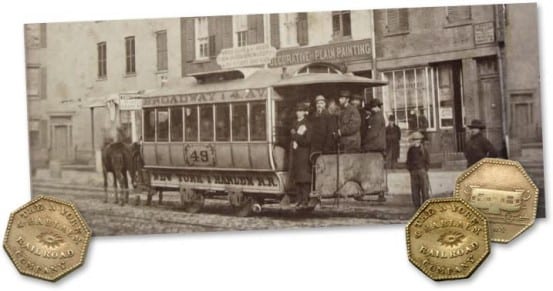
Early photograph of a New York and Harlem Railroad horsecar. New York & Harlem transfer tokens from the American Numismatic Society.
I’m not sure how many of you frequent twitter, but I think it seems to be a running joke that every day there is some sort of “national holiday” that is trending. I’m not exactly sure how things like “National Fried Chicken Day” (July 6th) or “Walk on Stilts Day” (July 27) get declared, but people on twitter totally love this crap. Manhattan, not wanting to miss out on the action of remarkably stupid “holidays,” even declared a “Justin Bieber Appreciation Day” (June 19). In all seriousness, why don’t we declare national holidays (or at least New York holidays) for stuff that is actually interesting, or even historical? I’d do just fine declaring April 25th “Harlem Railroad Day,” for the day that the New York and Harlem Railroad was chartered in 1831. You know… New York City’s first railroad? It’s kind of a big deal…
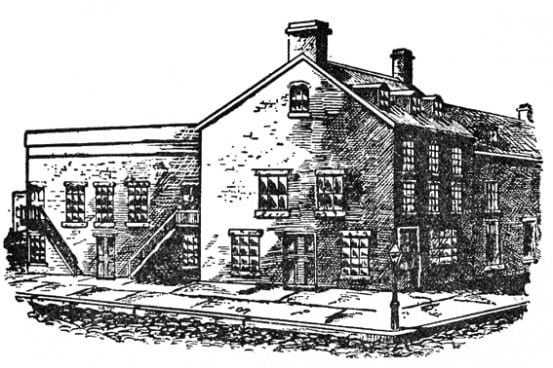
New York & Harlem’s railroad station at Tryon Row
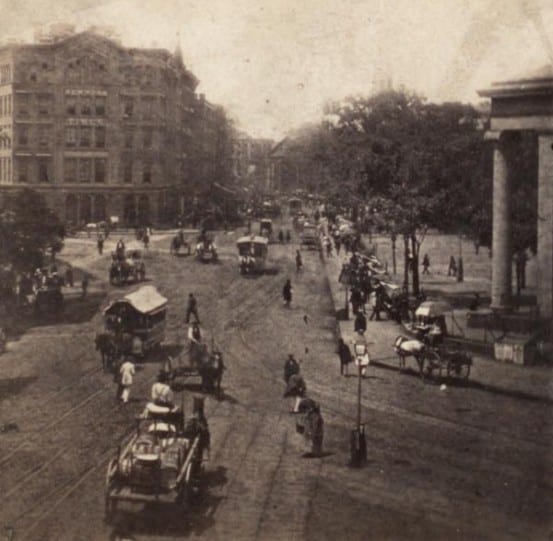
View of the neighborhood surrounding Tryon Row. 41 Park Row, which still exists today, is visible in the background – along with several horsecars. On a little bit of a tangent, the ASPCA was formed in 1866, with a primary focus on protecting the rights of horses – many of which pulled the earliest “railcars.”
One of the New York & Harlem’s earliest stations in Manhattan was at Tryon Row, a street that no longer exists. At the time the “trains” were being pulled by horses, and there were short cars – pulled by two horses, and longer cars – pulled by four or more horses. Downtown service used the shorter cars, and Tryon Row served as a point of change for people heading north in the longer cars. The station also housed a place called Pullen’s Express, from where you could send packages or money to be carried over the Harlem. I happened to find a rather interesting artifact recently – an example of the form a customer would fill out to use the service in the 1860’s.
While the front of the form lists the office at Tryon Row, which is pretty cool on its own considering it is a very early Manhattan station, I happen to be a big fan of the back. The back lists all the various places in New York, Connecticut, Vermont, and New Hampshire that one could send money or goods. Many of the named places are Harlem stations, but others happen to be random places that they could connect to – either by a different railroad, or by other means.
I always love looking at old station lists for the Harlem though, as over the years the places and names have changed. Hart’s Corners became Hartsdale, Unionville became Hawthorne, Newcastle became Mount Kisco, Whitlockville became Katonah, South Dover became Wingdale, and Bains became Craryville. Chappaqua is listed as “Chapequa,” a spelling I had never seen before, but appears in various railroad printed material in the 1860’s and 70’s (and by modern-day idiots that can’t spell and have not yet discovered google). Bedford hadn’t yet added Hills, and Brewster and Pawling went by Brewsters and Pawlings.
Anyways, this is the stuff that makes me enjoy my job. Oh wait, did I say job? I may not be good enough to write for Metro-North, but writing about the railroad seems to be some honorary job I’ve picked up along the way. And I suppose it is better than me publicly admitting that I’m married to an inanimate object (like a website)… hmm…

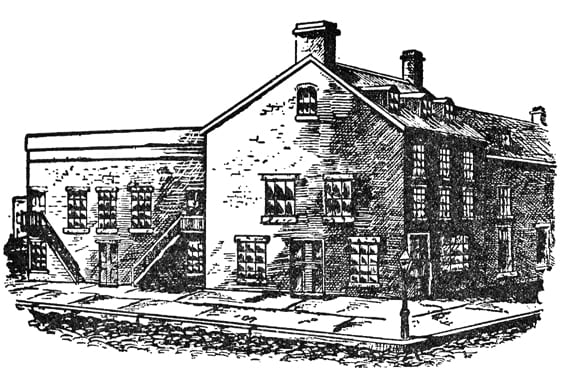
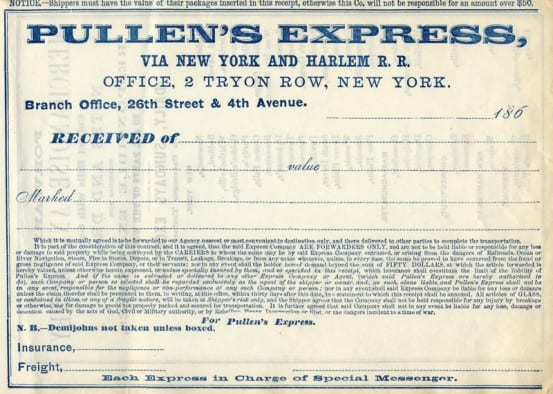
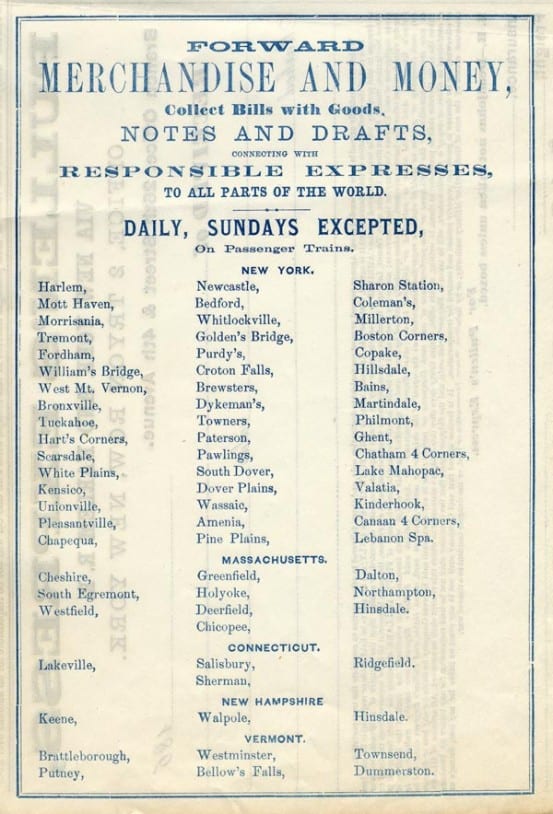
I can’t get over all the commas after each station and a period after the last one, not to mention all the other (to me, extraneous) commas and periods. I have to think the typesetter must have had his knuckles rapped too many times by some overbearing teacher with a ruler in her holster.
*cough* Hartsdale.
And if your story about Crestwood is anything like the other stories you’ve told me about stations, then no, I have no desire to know.
Who needs a job when you can have cake?
Mmmm… yes. Delicious cake that was not a lie! Thank you for being awesome :)
p.s.: The intersection of Central Park Avenue and Hartsdale Avenue was named “Hart’s Corners” after Robert Hart, one of these farmers who successfully bid for the land, and in the mid-19th century the entire area became known as “Hartsdale.” —Wikipedia
CG; I marvel at your unsurpassed abilty to aquire such scarce and rare vintage documents; it’s amazing that such a old and unusual document only peripheral to the Harlem RR even exists after such a long time-period.
I hope your aquisition of such historical documents will never cease, and that we will perpetualy be delighted and astonished when you present your most recent “find” to us.
Wonder what those demijohns which had to be boxed were holding? I’ll leave it to all of you to look up what a demijohn is…